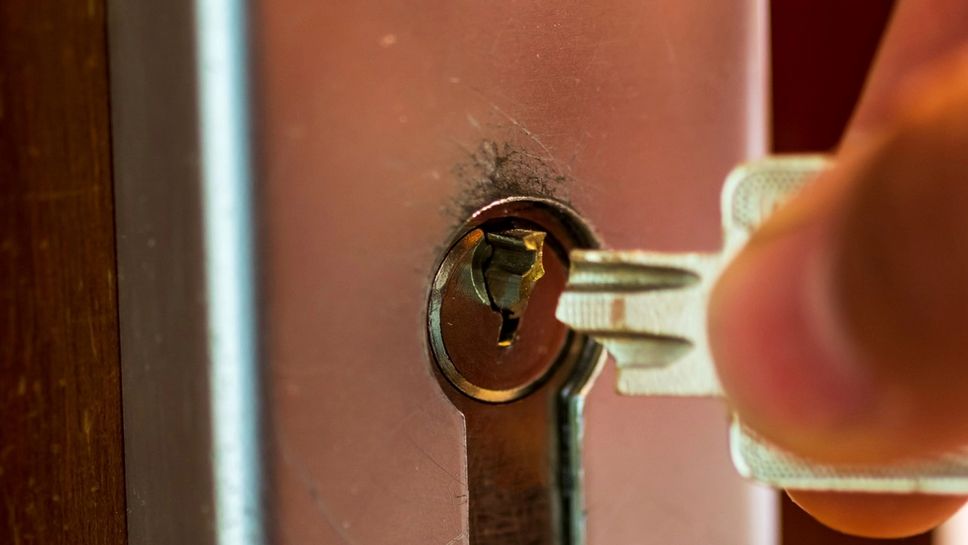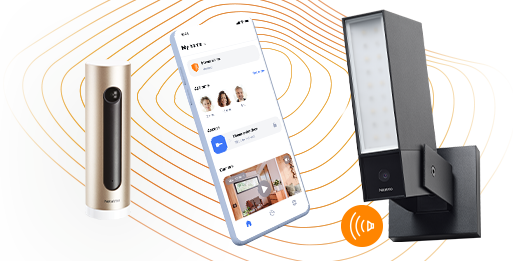You’re standing on your front step after getting home from work, a trip or an errand, and all you want to do is get inside. But then...just as you turn your key in the door lock, it breaks in two! A piece remains in the lock and you realise you’re locked out. So, what’s the best way to remove the broken piece of key from the lock? Here’s our handy guide with some tips on how to get your key out of the lock and prevent it happening again. There’s more than one way to go about it: tweezers, glue, a blade, an extractor kit... The right tool will depend on your situation. If you’re looking to save money, you may like to try one of the DIY methods below before calling out a locksmith. You might just save yourself a tidy sum!

What are the solutions for removing broken keys from a lock?
The different methods for removing a broken key from a lock
- Lubricate the lock: Use a lubricant such as graphite powder or a spray lubricant specially designed for locks. Apply it in the lock to reduce friction and make it easier to remove the broken key.
- Use tweezers: If part of the key is sticking out of the lock, you can try and pull it out using a pair of tweezers. Firmly grasp the protruding part of the key and gently pull it out of the lock. A pair of needle nose pliers may also do the job.
- Use a magnet: for this method to work, your keys need to be made of a magnetic material (iron or steel, for example). In this case, you can hold a magnet close to the lock to attract the piece of key that’s stuck, and you should be able to pull it out.
- Use a key extractor kit: If the key has broken inside the lock and no part is sticking out, you can try using a key extractor kit to pull the key blade out. These kits are generally inexpensive and contain a variety of hooks to fit a range of different locks. If you have this tool, you need to insert the key extractor carefully into the lock, following the instructions supplied with the kit. Turn the extractor slightly to hook onto the broken key, then pull gently to remove it. If you don’t want to spend money on a broken key extractor set, you can make one yourself out of a small jigsaw blade.
- Dismantling the lock: with a bit of DIY know-how, you might be able to dismantle the plug, cylinder and lock.
- Use glue to stick the parts of the key back together: you can try applying a gel-type glue to the part of the key that’s stuck in the lock, using a metal wire or toothpick end. If you do take this step, make sure you don’t push the broken part of the key blade even further into the lock.
- Call a professional locksmith: if you’ve tried the methods above and still can’t get the broken key out, or you don’t want to take any chances, it’s advisable to call a professional locksmith. Locksmiths have the skills and equipment to work with all kinds of car and house locks, and will be able to solve the problem without damaging the lock.
Depending on the type of lock you have and how the key broke off in it, some methods will work and others will not. It’s always best to consult a professional if you have any doubts or difficulties.
How much does it cost to remove a broken key that’s stuck in a lock?
The cost of removing a broken key from a lock can vary depending on the type of lock and the complexity of the problem. The price will also depend on the tools you use to remove the stuck piece of key, and whether you have to call upon a professional locksmith.
In general, when you call a locksmith for help, the price includes:
- The call-out fee: Some locksmiths charge a call-out fee.
- Labour: locksmiths usually charge a labour fee covering the time and expertise required to remove the broken key from the lock.
- Materials and tools: if special tools or additional parts are required to help extract the broken key, this may increase the price.
- Replacement costs: if the lock or key is damaged during the removal process, they may need to replace it with a new one, which can add to the cost.
Can your insurance cover the cost of repairing your lock?
Depending on your home insurance, lock repair costs may be covered. However, this depends on your insurance company and the specific terms of your policy.
How does a key get stuck in a lock?
- Poor lubrication: When a lock isn’t properly lubricated, its internal pins and springs can jam, making it difficult to turn the key and unlock the door.
- Your key is twisted or damaged: a twisted, bent or damaged key can cause the lock to jam by snapping inside it.
- A problem with the lock cylinder: a defective or damaged lock cylinder can cause the lock to jam. This may be due to normal wear and tear, mechanical damage or tampering. In fact, a lock that’s been forced open or damaged, particularly by burglars trying to pick it, can sometimes jam and stop working properly.
- Frozen lock: In colder parts of the world, moisture can seep into the lock and freeze, making it difficult to move the key in the lock.
- Build-up of dirt and debris: over time, dust, dirt, metal particles and other debris can accumulate inside the lock, causing it to jam stopping it from working properly.
